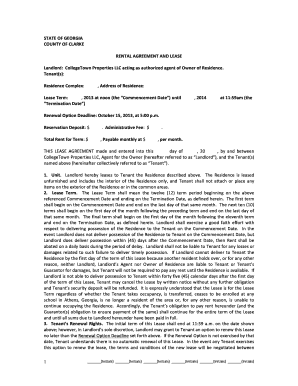Understanding The Meaning And Significance Of Factoring Expressions: A Comprehensive Guide
Introduction
Factoring is a fundamental concept in algebra that plays a pivotal role in simplifying complex mathematical expressions. When you encounter an expression like \( x(x+1)(x-4) + 4x + 1 \), understanding how to break it down into simpler factors can make solving equations much easier. In this article, we’ll delve into the meaning of factoring, explore how it works, and provide practical tips for simplifying expressions using online tools and manual techniques.What Does Factoring Mean?
Factoring is essentially the process of rewriting an expression as a product of simpler factors. Just as numbers can be factored into smaller components (e.g., \( 6 = 2 \times 3 \)), algebraic expressions can also be broken down into simpler terms. For instance, the expression \( (x+2)(x+3) \) can be expanded to \( x^2 + 5x + 6 \). Conversely, factoring involves taking \( x^2 + 5x + 6 \) and rewriting it as \( (x+2)(x+3) \). Factoring is particularly useful when solving equations, simplifying fractions, or analyzing the structure of polynomials. By breaking down an expression into its factors, you can identify patterns, simplify calculations, and gain deeper insights into the mathematical relationships at play.Why Factor Expressions?
1. Simplification
Factoring simplifies complex expressions by reducing them to their most basic components. This makes it easier to work with equations, especially when dealing with higher-degree polynomials.2. Solving Equations
When solving equations, factoring allows you to set each factor equal to zero and solve for the variable. For example, if you have \( x(x+1)(x-4) = 0 \), you can solve for \( x \) by setting each factor equal to zero: \( x = 0 \), \( x+1 = 0 \), and \( x-4 = 0 \).3. Identifying Patterns
Factoring helps reveal patterns and structures within an expression. For instance, recognizing a perfect square trinomial or a difference of squares can simplify further calculations.How to Factor an Expression
Step-by-Step Process
Factoring expressions can seem daunting at first, but breaking it down into manageable steps makes it much easier: 1. **Identify Common Factors**: Look for terms that appear in all parts of the expression. For example, in \( 3x^2 + 6x \), the common factor is \( 3x \). 2. **Group Terms**: Group terms together if the expression has multiple components. This is especially useful for factoring by grouping. 3. **Use Factoring Techniques**: Depending on the structure of the expression, apply specific factoring techniques such as: - **Difference of Squares**: \( a^2 - b^2 = (a+b)(a-b) \) - **Perfect Square Trinomials**: \( a^2 + 2ab + b^2 = (a+b)^2 \) - **Quadratic Factoring**: Factor quadratic expressions into two binomials. 4. **Check Your Work**: Expand the factored expression to ensure it matches the original.Example: Factoring \( x(x+1)(x-4) + 4x + 1 \)
Let’s apply these steps to the given expression: 1. Start with \( x(x+1)(x-4) + 4x + 1 \). 2. Expand \( x(x+1)(x-4) \) if necessary: \( x(x^2 - 4x + x - 4) = x(x^2 - 3x - 4) \). 3. Combine like terms: \( x(x^2 - 3x - 4) + 4x + 1 \). 4. Look for common factors or group terms to simplify further.Using Online Tools for Factoring
If manual factoring seems too challenging, online tools can help simplify the process. Here are some popular options:1. Symbolab
Symbolab is a versatile calculator that provides step-by-step solutions for a wide range of math problems, including factoring. Simply enter your expression, and the tool will guide you through the factoring process.2. Mathway
Mathway offers free step-by-step solutions for algebra, calculus, and other math problems. Use it to factor polynomials, find roots, or simplify expressions.3. WolframAlpha
WolframAlpha is a powerful computational engine that can handle complex mathematical expressions. It not only factors equations but also provides graphs, alternate forms, and detailed explanations.4. Desmos
While primarily a graphing calculator, Desmos can also be used to visualize algebraic equations. Input your expression, and explore its structure visually.Tips for Effective Factoring
1. Practice Regularly
Factoring becomes easier with practice. Work through a variety of problems to develop your skills.2. Use Visual Aids
Graphing tools like Desmos can help you visualize the behavior of polynomials and identify potential factors.3. Break Down Complex Problems
If an expression seems overwhelming, break it into smaller parts. Focus on one section at a time to avoid confusion.4. Check for Patterns
Look for common patterns such as the difference of squares, perfect square trinomials, or grouping opportunities.Conclusion
Factoring is a crucial skill in algebra that simplifies expressions, solves equations, and reveals underlying mathematical structures. Whether you’re working with simple binomials or complex polynomials like \( x(x+1)(x-4) + 4x + 1 \), understanding the principles of factoring can make your math journey smoother. By combining manual techniques with the assistance of online tools, you can master this essential concept. In summary: - Factoring simplifies expressions and aids in solving equations. - Use step-by-step methods to break down complex expressions. - Leverage online calculators like Symbolab, Mathway, and WolframAlpha for additional support. - Practice regularly and look for patterns to enhance your factoring skills. With these strategies, you’ll be well-equipped to tackle any factoring challenge that comes your way!
X X X X Factor X X 1 X 4 4 X 1 Meaning Means - Fill Online, Printable

Solved If f'(x) = x(x - 1)(x + 3)4, then f(x) has a local | Chegg.com

X X X X Factor X X 1 X 4 4 X 1 Meaning Means - Fill Online, Printable